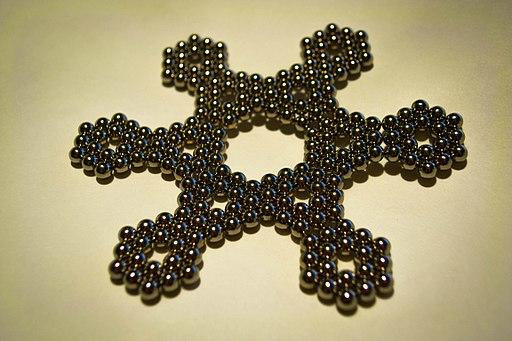A Colorado toddler required emergency medical intervention after ingesting 28 high-powered buckyball magnets. Foreign bodies are par for the course in the world of pediatrics since young children, in particular, are fascinated by scents, textures, sounds or tastes since they are easily stimulated by their environments. They stick things in any hole they can find when given the chance, as curiosity abounds.
This is why conversations are continuously held between pediatricians and families surrounding childproofing and adapting to an individual child's explosive journey through the developmental stages. Heck, it is why I wrote an entire series on Inanimate Objects in Orifices covering the eyes, ears, nose, throat, penis and urethra, and vagina. That's how common these scenarios arise in medicine, though in it I detail how the motivations for children and adults traditionally differ.
The problem is the what. Eating some of their own poop or the dog's poop though unseemly is unlikely to cause any significant issues. Magnets, however, can be quite dangerous once swallowed. We don't need to look much further than this recent case of 2-year-old Ella McBrien whose magnets conjoined in a circular manner that began to erode and obstruct bowel. This can pose a surgical emergency if less invasive means can't solve the problem by accessing and safely removing the objects. It was in the second effort utilizing specialized endoscopy that the doctors were able to achieve success.
If these procedures cannot achieve the desired result, then major surgery can be a next step depending on the urgency of the clinical situation. This can possibly lead to removal of segments of bowel. Basically, an otherwise healthy person can lose some intestine which despite the incredible resilience of children, in general, could lead to longer term consequences.
Her physician described to Fox31 Denver, "They were pinching the bowel and causing the early formation of a hole within the bowel by the time we got in there," Dr. Robert Kramer, Co-medical Director of the Digestive Health Institute and the Director of Endoscopy at Children's Hospital Colorado, told the news station, "That can have very significant implications. In the worst cases there has been deaths associated with these."
Apparently, these specific magnets were recalled in 2013 by the U.S. Consumer Product Safety Commission. The courts overturned this decision in 2016, so they are again available.
Magnets are particularly dangerous for these reasons. Batteries can corrode, so pose considerable risk when ingested. Objects that are sharp like an unclosed safety pin can serve to perforate bowel. As can certain chemicals cause mechanical degradation and intoxication.
Fortunately, most of the time the foreign bodies are more benign and may require checking the stool to affirm satisfactory passage. The key is to seek medical care and guidance early from a trained professional to prevent escalation and be able to ascertain what is urgent and what is not worrisome. Accidental ingestions are relatively common in pediatrics and your pediatrician can best guide you-- in these scenarios, sooner is better than later.
This father described turning away for a few seconds which is all it takes for such events. It is important to know your child and what their individual limitations or abilities really are before allowing them access to certain products. Due to the rapidity of advancing development in toddler years, getting on your hands and knees and seeing the world from your child's eyes can be a worthwhile endeavor. Continually reassessing what they can and cannot get into is in everyone's best interest. It is important to balance living with such preventive measures. There will always be hazards in the world and zero risk environments are elusive, but there are many ways to ensure a safer surrounding. Your pediatrician can help. Proactively reviewing with your pediatrician the common culprits at each visit (or when concerned) should serve as an invaluable resource.
Note(s):
The American Academy of Pediatrics (AAP) has more detailed guidelines on child-proofing at different ages along with what particular items and settings are the most worrisome.




